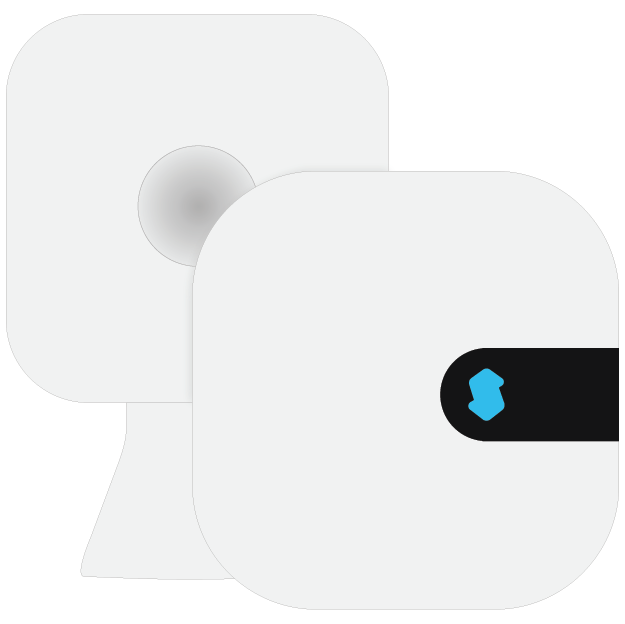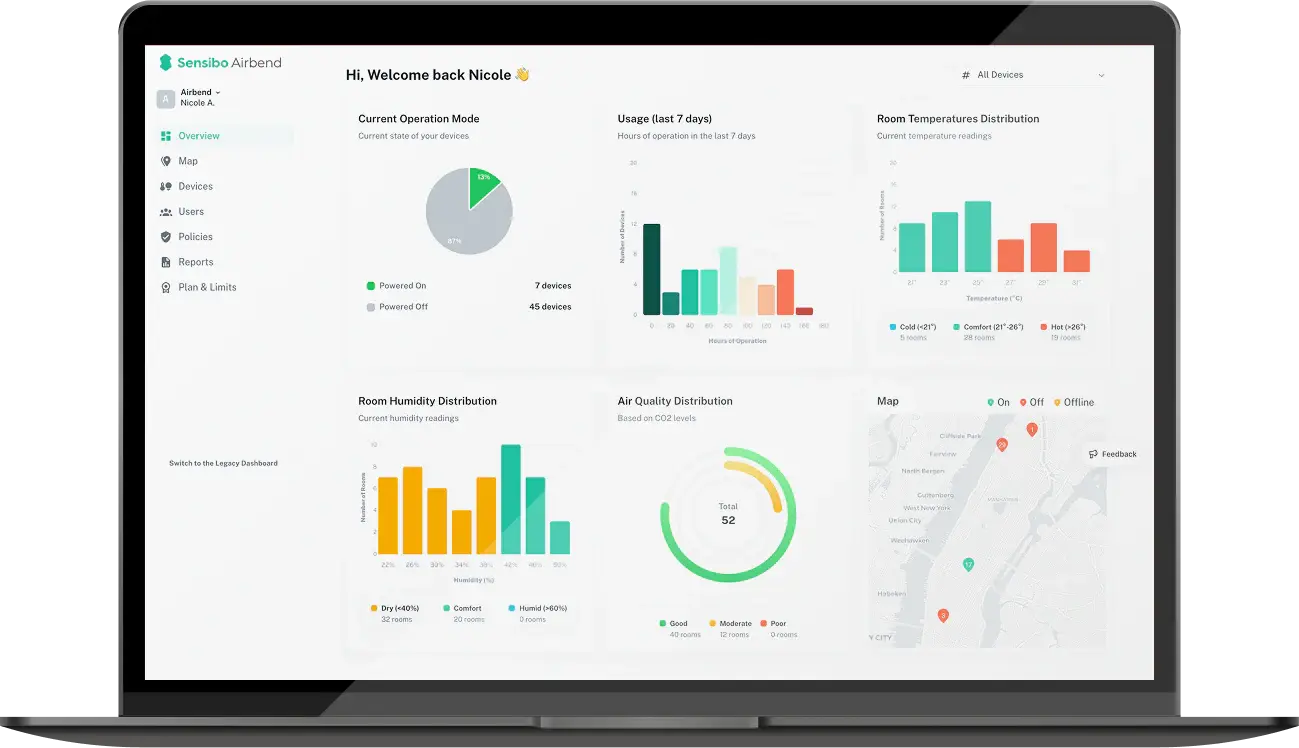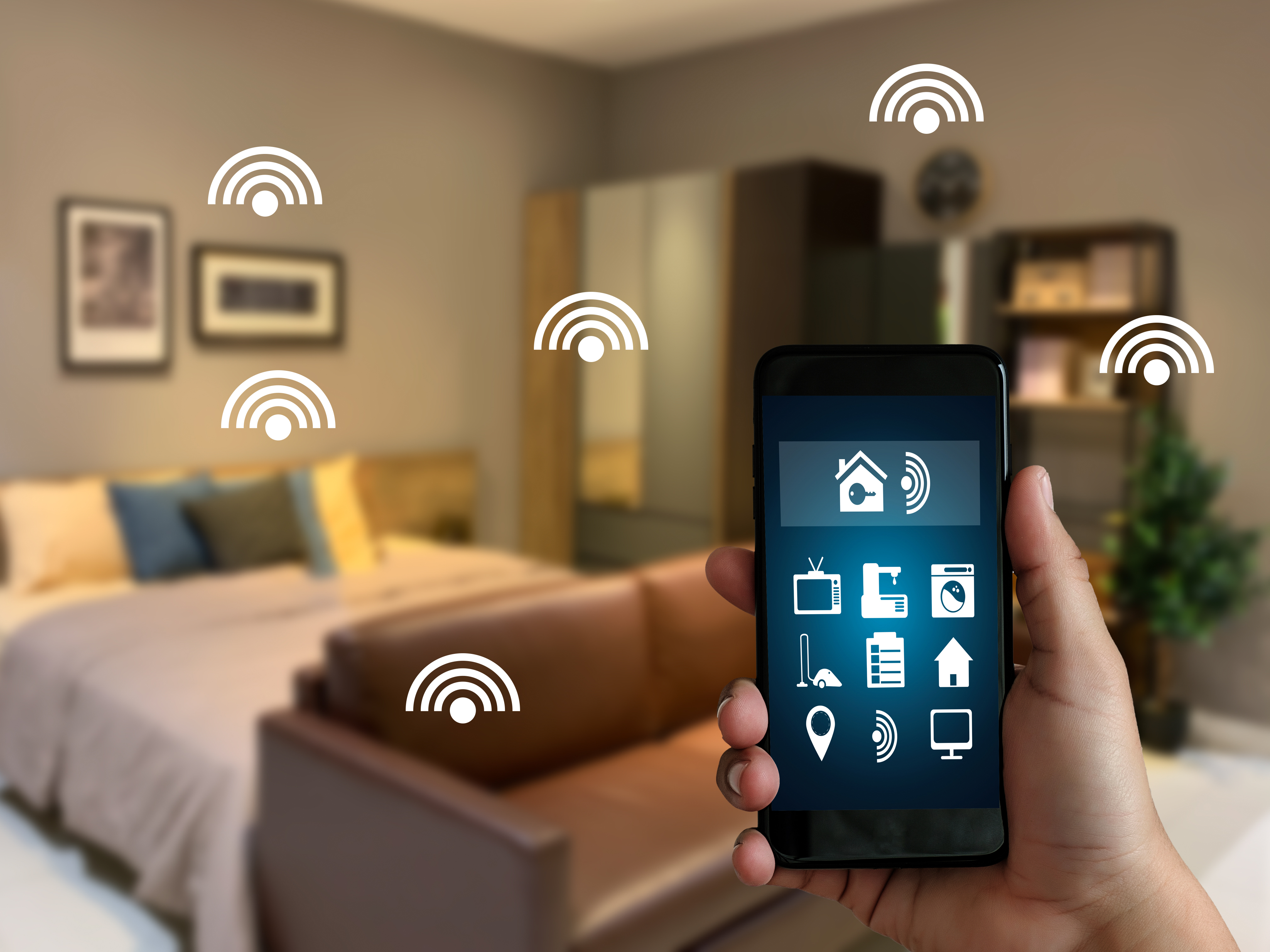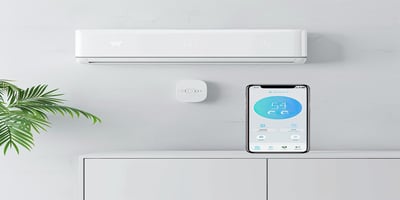Improving Energy Efficiency in The Home With Smart Sensors
Your upstairs bedroom feels like a sauna while the living room stays perfectly cool. Sound familiar? That's exactly what happened to Sarah, a homeowner from Portland, who watched her energy bills climb to $280 last summer while half her house remained uncomfortably hot.
The culprit? Her single thermostat downstairs had no clue what was happening on the second floor. Like most homes, hers was designed with one-size-fits-all climate control that wastes energy heating and cooling spaces unevenly.
Smart sensors changed everything for Sarah – and they can transform your energy bills too. These small devices create a network throughout your home, giving your HVAC system eyes and ears in every room.
What Are Smart Sensors for Home Climate?
Think of smart sensors as your home's nervous system. They're compact devices that constantly monitor conditions throughout different rooms, unlike that lonely thermostat on your hallway wall.
How Smart Sensors Work Together
Each sensor communicates with your HVAC system, sharing real-time data about who's home, which rooms are occupied, exact temperature and humidity in each space, and environmental changes like open windows or afternoon sun. Advanced systems can even monitor air quality conditions that affect both comfort and health.
The magic happens when multiple sensors collaborate. Your bedroom sensor knows you're sleeping and adjusts accordingly. Your living room sensor recognizes movie night and keeps things comfortable. Meanwhile, that guest room nobody's using gets just enough conditioning to prevent humidity issues without wasting energy.
Advanced systems can distinguish between different family members based on movement patterns and preferred temperatures, automatically adjusting when mom (who runs cold) enters a room versus dad (who prefers it cooler).
Types of Smart Sensors That Cut Energy Costs
 Temperature Sensors for Home Applications
Temperature Sensors for Home Applications
Modern temperature sensors use digital precision that stays accurate for years. But placement strategy matters more than most people realize.
Take Mike's story: he installed his first smart thermostat and couldn't figure out why his family room stayed freezing while his kitchen overheated. The problem? His old thermostat sat right next to the kitchen, getting false readings from cooking heat and afternoon sun.
Best placement practices:
- Shoulder-height on interior walls
- Away from heat sources and direct sunlight
- Not too close to HVAC vents
- In rooms where people actually spend time
Professional installers recommend considering thermal mass effects near fireplaces or large windows, and installing sensors in rooms with different orientations. South-facing rooms heat up differently than north-facing ones, and your HVAC system needs to understand these variations to avoid overcooling some areas while others remain warm.
Humidity Sensors: The Comfort Game-Changer
A home humidity sensor tackles the comfort puzzle that most people ignore. High humidity makes 75°F feel like 80°F, so you crank the AC. Low humidity makes 70°F feel chilly, so you bump up the heat. Either way, you're fighting the wrong problem.
Smart humidity sensors trigger dehumidification when moisture climbs above 60%, or add humidity when it drops below 40%. Sarah discovered this when her Portland home felt muggy all summer despite constant air conditioning. Adding humidity control lets her raise her thermostat by 3 degrees while feeling more comfortable.
The energy impact of proper humidity control runs deeper than most homeowners realize. Each degree of temperature adjustment saves 6-8% on energy costs, while proper humidity levels can reduce perceived temperature by 2-4 degrees. This also prevents mold growth that can damage HVAC systems and maintains indoor air quality without over-ventilating.
Occupancy Detection: Why Heat Empty Rooms?
Occupancy sensors use infrared or microwave technology to detect when rooms are actually being used. Advanced models can even distinguish between pets and people (because nobody wants the AC kicking on every time the cat walks by).
A door sensor takes this intelligence further by detecting exterior door activity. Picture hosting a barbecue with people going in and out – your AC would normally work overtime trying to cool the outdoors. Smart door sensors immediately adjust when they detect door activity.
Modern occupancy sensors include motion detection with customizable sensitivity, learning algorithms that recognize daily patterns, and even sleep mode recognition that automatically adjusts temperatures for better rest. Some integrate with existing security systems for enhanced detection capabilities.
Key Benefits of Smart Sensors for Energy Savings
Dramatic Reductions in Energy Waste
The benefits of smart sensors show up immediately in monthly bills through zoned control that heats or cools occupied areas to 72°F while maintaining unused spaces at 65°F. This targeted approach typically reduces energy use by 20-30%, with larger homes featuring multiple floors seeing savings up to 40%.
Automated scheduling represents another major advantage. The system learns family patterns automatically, understanding that school mornings require heated bedrooms and kitchen areas, afternoons need home office cooling, and evenings call for comfortable living spaces. Weekend variations get handled seamlessly without manual programming.
Preventive Maintenance That Saves Money
Smart sensors monitor system performance continuously, catching problems before they become expensive repairs. Dirty filters can reduce efficiency by 15-25%, while failing motors increase energy draw significantly. The sensors detect unusual energy consumption patterns, temperature inconsistencies indicating duct problems, and humidity issues suggesting ventilation troubles.
These systems provide filter replacement reminders based on actual usage rather than arbitrary schedules, and they alert homeowners to refrigerant leaks in cooling systems before major damage occurs. Component wear gets identified early, preventing complete system failures during extreme weather.
Remote Control for Real Life
Life doesn't follow rigid schedules, and smart sensors accommodate unexpected changes. Stuck late at work? Lower the thermostat from your phone. Coming home early from vacation? Start cooling the house during your drive. House sitter needs different temperatures? Adjust settings from anywhere without complicated instructions.
 Seasonal Optimization Strategies
Seasonal Optimization Strategies
Summer Efficiency Techniques
Smart sensors enable sophisticated pre-cooling strategies that take advantage of off-peak electricity hours, typically between 10 PM and 6 AM. This approach reduces strain on the electrical grid during peak demand while storing "coolness" in thermal mass like floors and walls. Sensors positioned in rooms with afternoon sun exposure help track thermal changes, while monitoring attic temperatures provides insights into how upper floors are affected.
The key lies in understanding thermal lag in different building materials. Concrete floors store cooling longer than wood-framed walls, and sensors help optimize these characteristics. During monsoon seasons in places like Arizona, humidity sensors become crucial for managing the sudden moisture changes that affect comfort levels.
Winter Heating Optimization
Cold weather brings different challenges that smart sensors address through targeted heating patterns. Pre-heating bedrooms 30 minutes before wake-up times ensures comfort without wasting energy on empty spaces overnight. Unused areas can safely operate 8-10 degrees cooler, while basement monitoring prevents pipe freezing concerns.
Rooms above unheated garages require special attention, as sensors reveal how these spaces lose heat differently. Advanced systems track outdoor temperature correlation with indoor comfort, adjusting for wind chill effects on the building envelope. Ice dam prevention becomes possible when sensors monitor attic conditions and coordinate with heating patterns.
Smart Home Integration Beyond Climate
Modern smart sensors work beyond climate control, integrating with broader home automation systems for enhanced efficiency. Lighting coordination becomes automatic when sensors detect room occupancy, adjusting both temperature and illumination simultaneously. This synergy reduces heat gain from unnecessary lighting while ensuring comfort when spaces are actually used.
Security system integration creates powerful combinations where occupancy data helps arm and disarm security zones automatically. Unusual temperature patterns can indicate break-ins, while vacation modes coordinate across all home systems. Motion detection data gets shared between climate and security platforms, eliminating redundant sensors.
Voice assistant integration adds convenience through natural language commands. "Alexa, why is the bedroom so warm?" provides real sensor data instead of generic responses. Custom routines based on sensor readings create personalized automation that responds to actual conditions rather than rigid schedules.
Implementation Strategy: Start Smart, Expand Later
Phase 1: High-Impact Placement
Sarah started with just three sensors in her living room, master bedroom, and upstairs hallway. These covered her family's primary zones and immediately revealed the temperature differences driving up bills. Focus on spaces where your family spends 80% of their time, including kitchens where cooking significantly affects temperature readings.
Phase 2: System Integration and Expansion
Newer smart thermostats accept sensor data directly through wireless connections, providing immediate energy savings and mobile app control. Older systems may require thermostat upgrades, but even these investments typically pay back within 18 months through reduced energy costs.
Common installation mistakes include placing sensors too close to return air vents, installing them in rooms with extreme temperature swings, and forgetting about pet areas that affect occupancy detection. WiFi dead zones can disrupt sensor communication, so network coverage needs consideration during planning phases.
Phase 3: Advanced Optimization
Weather integration transforms reactive climate control into predictive management. Pre-cooling before hot afternoons and pre-heating before cold snaps optimize energy usage while maintaining comfort. Storm preparation becomes automated, with backup climate control ready for extreme weather events.
Advanced configuration allows different temperature preferences for each family member, vacation modes that maintain minimal conditioning, and emergency overrides for unusual weather patterns. These features compound efficiency gains as the system learns household patterns over time.
Sensibo Technology
 We've developed sensor technology specifically for residential energy efficiency challenges. Our room sensor combines temperature, humidity, and occupancy detection in a single device that works with most HVAC systems.
We've developed sensor technology specifically for residential energy efficiency challenges. Our room sensor combines temperature, humidity, and occupancy detection in a single device that works with most HVAC systems.
Our sensors use enterprise-grade precision components that maintain accuracy for years without requiring recalibration. Wireless connectivity eliminates complicated wiring, while battery operation ensures continued function during power outages. Universal compatibility means they work with split systems, central air, heat pumps, and window units.
The Sensibo platform processes sensor data through cloud-based learning algorithms that adapt to your specific home and family patterns. This creates personalized climate control that becomes smarter over time, delivering measurable results that compound as the system learns your preferences and daily routines.






































